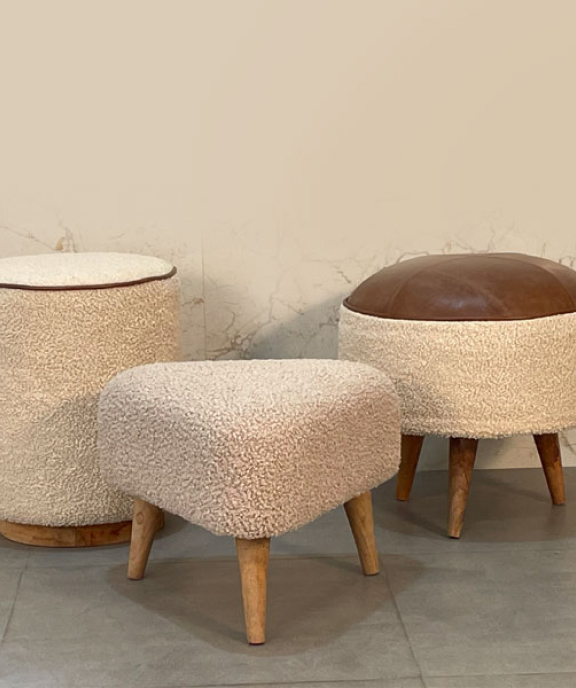When selecting wood for high-quality furniture, consider factors such as density, grain type, and resistance to warping. Mahogany offers water resistance, teak is durable with high oil content, and oak is known for its hardness. Look for straight grain, consistent color, and no knots or cracks as indicators of excellent quality wood.
Focus on durability and aesthetics, match the wood to your home design, and use proper finishing techniques. Protect wooden furniture with regular cleaning, avoiding direct sunlight, and using suitable polish. Enhance durability through quality joinery techniques and proper wood selection.
Understanding Wood Types
When selecting high-quality furniture wood, understanding the unique qualities of different wood types such as mahogany, teak, oak, walnut, and cherry is crucial. Each type offers distinct characteristics that influence the overall look and feel of the furniture piece.
Mahogany is known for its water resistance, making it suitable for pieces exposed to moisture. Teak has a high oil content and durability, ideal for outdoor furniture. Oak is very hard and durable, often used for furniture requiring strength.
Walnut's rich color adds luxury to furniture. Cherry wood has a smooth texture and elegant reddish-brown color, bringing sophistication to pieces. Understanding these wood types is essential for ensuring furniture meets aesthetic and functional requirements.
Factors Affecting Wood Quality
Factors such as density, grain type, resistance to warping or cracking, moisture content, and grain direction significantly impact the quality of wood used in furniture manufacturing.
These factors influence stability, durability, strength, and aesthetic appeal of the wood.
Understanding and considering these factors is crucial when selecting wood for high-quality furniture production.
Common High-Quality Wood Species
When it comes to common high-quality wood species, Mahogany is known for its water-resistant properties, ideal for furniture exposed to moisture. Teak's high oil content provides natural resistance to decay and insects, ensuring furniture longevity in challenging environments.
Oak is valued for its hardness and durability, making it a popular choice for sturdy furniture. Walnut is selected for its rich color and luxurious appearance in high-end furniture projects.
Cherry wood, with a smooth texture and elegant reddish-brown hue, adds sophistication to furniture designs. These wood species offer a variety of options to meet different furniture needs and styles based on characteristics, pricing, finishing, and maintenance requirements.
Identifying Quality Wood
Assessing quality wood for furniture involves examining characteristics like straight grain, consistent color, absence of knots, and lack of cracks. These traits indicate durability and overall quality in the wood.
Moisture resistance is also crucial in identifying high-quality wood, as it ensures the longevity of the furniture by protecting it from warping or rotting.
Grain patterns, such as tight or open grain patterns, play a significant role in determining the strength and stability of the wood.
Understanding these features helps in selecting the ideal wood for durable furniture that will last.
Tips for Choosing the Perfect Wood
When choosing wood for furniture, consider durability, aesthetics, and unique qualities of woods like mahogany, teak, oak, walnut, and cherry. Each type offers distinct characteristics affecting water resistance, decay, insect resistance, and longevity.
Tailor your selection to complement home design and maintenance preferences. Utilize appropriate finishing techniques to enhance beauty and durability. Proper care extends furniture lifespan, creating custom pieces reflecting style and durability.
Evaluating Wood Quality
When evaluating wood quality for furniture, it's essential to consider key indicators such as straight grain, consistent color, and minimal knots or cracks. The following wood characteristics are crucial for assessing quality:
- Grain Pattern: A straight and even grain pattern signifies stability and strength in the wood selection, while irregular or interlocked grains may impact the overall quality and appearance of the furniture.
- Color Consistency: Uniform color throughout the wood indicates a higher quality material, enhancing the aesthetics of the furniture piece.
- Knots and Cracks: Few knots and cracks suggest better wood quality as these imperfections can weaken the structure and compromise durability.
Understanding these wood characteristics is essential for selecting high-quality wood for furniture, ensuring longevity and resilience in your pieces.
Taking Care of High-Quality Wooden Furniture
Moving on from evaluating wood quality for furniture, caring for high-quality wooden furniture involves regular cleaning and maintenance to preserve its natural beauty and longevity. Wood maintenance is essential in ensuring that your furniture retains its luster and durability.
Regularly clean and polish the wood to maintain its natural shine and prevent dirt buildup. Additionally, protect your wooden furniture from direct sunlight to avoid fading and warping over time. Using appropriate wood polish or oil can help nourish the wood and protect it from drying out.
It is important to avoid harsh chemicals that can damage the finish and overall longevity of the furniture. Instead, opt for gentle cleaning solutions and soft, damp cloths for dusting. By taking these simple yet effective steps, you can ensure that your high-quality wooden furniture remains in pristine condition for years to come.
Proper care and maintenance are crucial to enjoying the timeless beauty and functionality of your wooden pieces.
Sustainable Wood Sourcing Practices
Sustainable wood sourcing practices focus on responsibly harvesting wood to minimize environmental impact and ensure long-term forest health. When choosing wood for high-quality furniture, it's crucial to consider sustainable harvesting and ethical sourcing methods.
Three key aspects to consider include forest stewardship, biodiversity conservation, and community well-being. Look for wood certified by programs like the Forest Stewardship Council (FSC) to guarantee it originates from sustainably managed forests.
Sustainable wood sourcing considers factors such as biodiversity and ecosystem health to maintain forest balance. Ethical sourcing practices not only address environmental concerns but also prioritize the well-being of local communities reliant on forest resources.
Enhancing Furniture Durability With Proper Wood Selection
In the realm of high-quality furniture, the choice of wood significantly impacts durability and longevity. Various wood types possess distinct properties that enhance furniture strength.
Mahogany offers water resistance, teak resists decay and insects, oak ensures hardness, walnut boasts a rich color, and cherry provides a smooth texture and reddish-brown hue.
Wood selection influences furniture durability, with finishing techniques, custom woodwork, and carving further enhancing both durability and aesthetics.
Ensuring Longevity Through Quality Joinery
Quality joinery techniques like dovetail or mortise-and-tenon joints are crucial for ensuring the longevity and durability of wooden furniture pieces. These techniques contribute to the strength and stability of the furniture, showcasing superior craftsmanship and attention to detail in wooden furniture design.
Properly executed joinery enhances the overall strength and stability of the furniture, making it last for generations. Understanding quality joinery helps in selecting long-lasting and sturdy wooden furniture pieces that add elegance to your space.
The design of the furniture and wood selection are essential for the longevity and aesthetics of the piece.
Frequently Asked Questions
What Type of Wood Is Used for High Quality Furniture?
Wood selection for furniture design prioritizes durability and aesthetic appeal. Sustainability and responsible wood sources are essential. Commonly used woods for high-quality furniture include mahogany, teak, oak, walnut, and cherry due to their unique properties.
How Do I Know What Wood Is Best for Furniture?
When selecting wood for furniture, it is important to consider wood characteristics that align with your design vision and project requirements. Wood selection plays a crucial role in the aesthetics of the furniture.
Which Wood Is Excellent for Furniture Making?
When selecting wood for furniture making, durability and aesthetics are paramount. Mahogany is known for its water resistance, Teak for its insect resistance, Oak for its durability, Walnut for its elegance, and Cherry for its beauty. Sustainability is a crucial factor, and staining techniques can enhance the natural appeal of these woods.
How Can You Tell Good Quality Wood Furniture?
Look for furniture made of solid hardwood with dovetail or mortise-and-tenon joints. Check for consistent color, straight grain, and few knots or cracks. Hardwoods are denser and more durable, with tight grain providing stability and strength in high-quality furniture.


